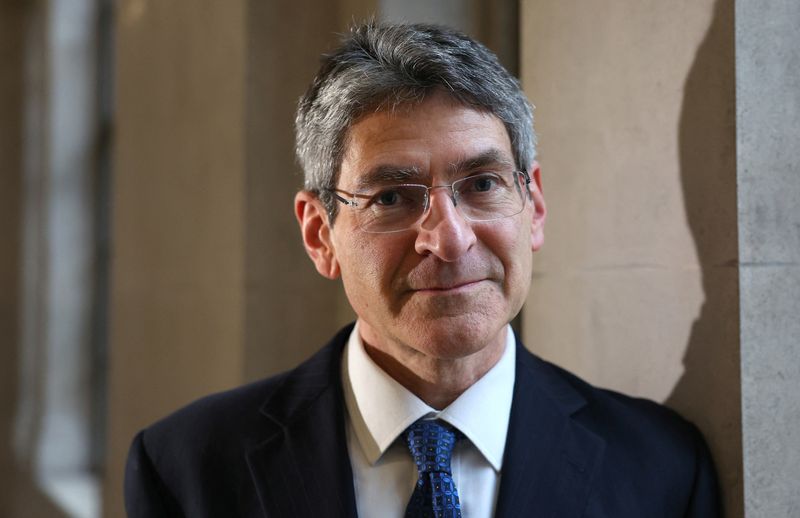By David Milliken
LONDON (Reuters) -More slack in Britain’s labour market is needed to be confident that inflation will stay at 2%, Bank of England policymaker Jonathan Haskel said on Tuesday.
“The labour market is central to the inflation aspect,” Haskel said at a seminar at City University’s Bayes Business School when asked if he now thought it possible inflation would hold at 2% rather than rise later this year.
Last month the BoE forecast inflation would fall below 2% in the second quarter of 2024, before rising towards 3% later in the year, but last week BoE Deputy Governor Dave Ramsden said he now thought inflation might now stay close to 2%.
Consumer price inflation dropped to 3.2% in March from 3.4% in February, and unemployment rose to a six-month high of 4.2% in the three months to February. But wage growth of 6.0% remained roughly double the pace most BoE policymakers view as consistent with 2% inflation.
Haskel said labour market tightness – as measured by the ratio between job vacancies and unemployment – was reducing, but “rather slowly”, and it was unclear if it was falling fast enough to keep inflation on target.
“The persistence of inflation depends a lot on how quickly that ratio comes down,” he said. “Reasonable people might reasonably disagree about the risks,” Haskel said.
Haskel, whose term on the BoE’s Monetary Policy Committee ends on Aug. 31, only stopped voting for higher interest rates last month, six months later than the majority of the committee. Financial markets currently price in a first cut in BoE rates from their 14-year high of 5.25% for June or August.
3rd party Ad. Not an offer or recommendation by Investing.com. See disclosure here or
remove ads
.
In his talk, Haskel said Britain’s labour market had been tight even before the COVID-19 pandemic, but his research suggested this played only a small role in the surge in prices which took inflation to a 41-year high of 11.1% by October 2022.
Instead, the main factors were a rise in energy prices which started before Russia’s full invasion of Ukraine, supply chain difficulties whose impact only became clear in the second half of 2021 and a later jump in food prices were.
